Zili Wu
Ultra-low Latency Adaptive Local Binary Spiking Neural Network with Accuracy Loss Estimator
Jul 31, 2022
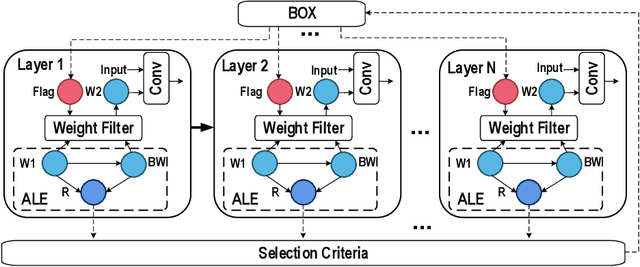
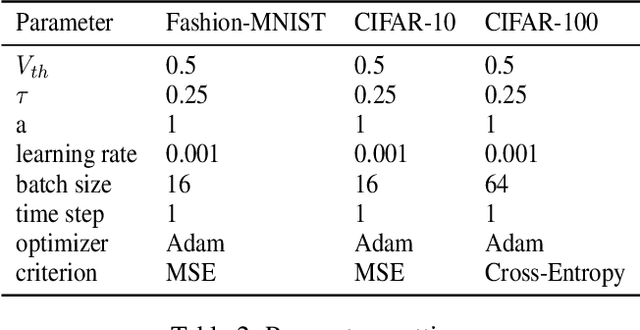
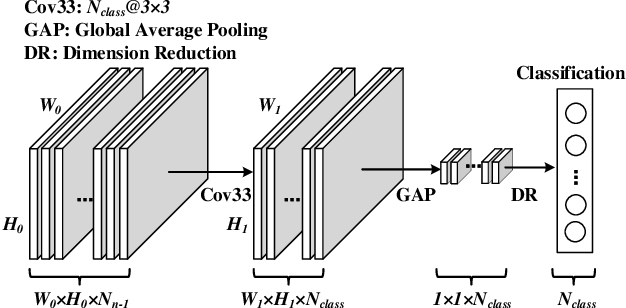
Abstract:Spiking neural network (SNN) is a brain-inspired model which has more spatio-temporal information processing capacity and computational energy efficiency. However, with the increasing depth of SNNs, the memory problem caused by the weights of SNNs has gradually attracted attention. Inspired by Artificial Neural Networks (ANNs) quantization technology, binarized SNN (BSNN) is introduced to solve the memory problem. Due to the lack of suitable learning algorithms, BSNN is usually obtained by ANN-to-SNN conversion, whose accuracy will be limited by the trained ANNs. In this paper, we propose an ultra-low latency adaptive local binary spiking neural network (ALBSNN) with accuracy loss estimators, which dynamically selects the network layers to be binarized to ensure the accuracy of the network by evaluating the error caused by the binarized weights during the network learning process. Experimental results show that this method can reduce storage space by more than 20 % without losing network accuracy. At the same time, in order to accelerate the training speed of the network, the global average pooling(GAP) layer is introduced to replace the fully connected layers by the combination of convolution and pooling, so that SNNs can use a small number of time steps to obtain better recognition accuracy. In the extreme case of using only one time step, we still can achieve 92.92 %, 91.63 % ,and 63.54 % testing accuracy on three different datasets, FashionMNIST, CIFAR-10, and CIFAR-100, respectively.
Sub-GMN: The Subgraph Matching Network Model
Apr 30, 2021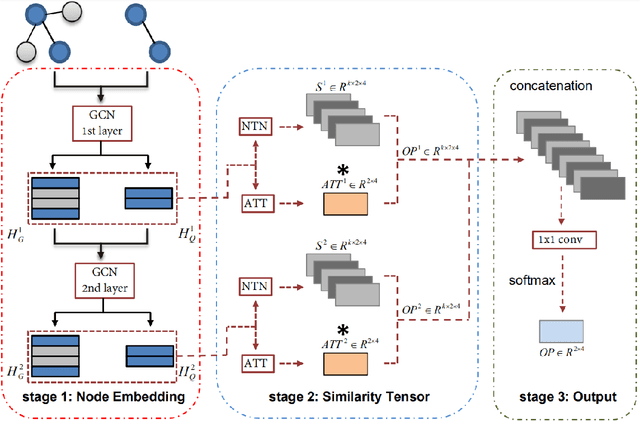


Abstract:As one of the most fundamental tasks in graph theory, subgraph matching is a crucial task in many fields, ranging from information retrieval, computer vision, biology, chemistry and natural language processing. Yet subgraph matching problem remains to be an NP-complete problem. This study proposes an end-to-end learning-based approximate method for subgraph matching task, called subgraph matching network (Sub-GMN). The proposed Sub-GMN firstly uses graph representation learning to map nodes to node-level embedding. It then combines metric learning and attention mechanisms to model the relationship between matched nodes in the data graph and query graph. To test the performance of the proposed method, we applied our method on two databases. We used two existing methods, GNN and FGNN as baseline for comparison. Our experiment shows that, on dataset 1, on average the accuracy of Sub-GMN are 12.21\% and 3.2\% higher than that of GNN and FGNN respectively. On average running time Sub-GMN runs 20-40 times faster than FGNN. In addition, the average F1-score of Sub-GMN on all experiments with dataset 2 reached 0.95, which demonstrates that Sub-GMN outputs more correct node-to-node matches. Comparing with the previous GNNs-based methods for subgraph matching task, our proposed Sub-GMN allows varying query and data graphes in the test/application stage, while most previous GNNs-based methods can only find a matched subgraph in the data graph during the test/application for the same query graph used in the training stage. Another advantage of our proposed Sub-GMN is that it can output a list of node-to-node matches, while most existing end-to-end GNNs based methods cannot provide the matched node pairs.
Balanced Order Batching with Task-Oriented Graph Clustering
Aug 19, 2020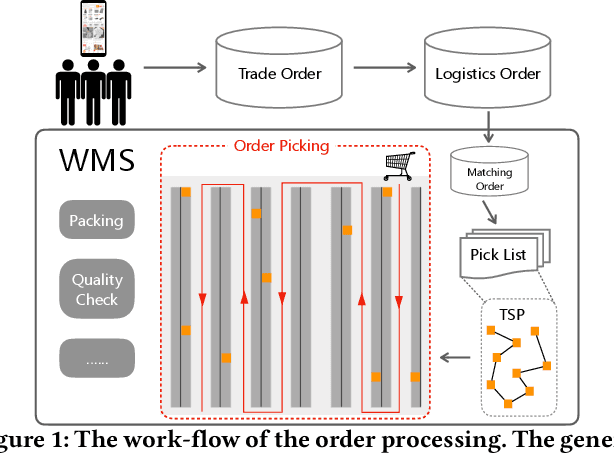

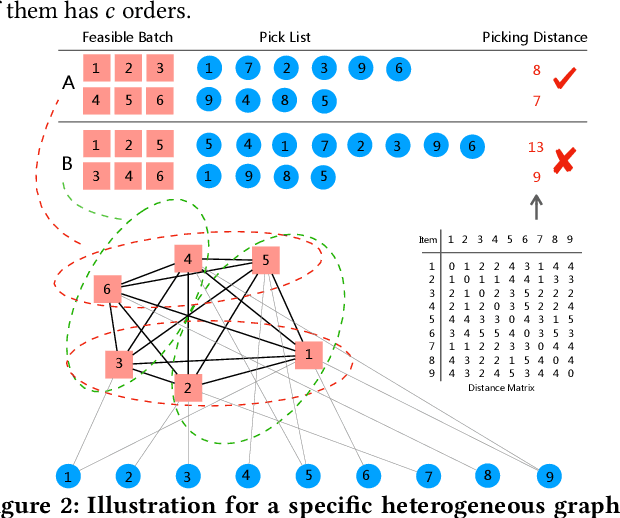

Abstract:Balanced order batching problem (BOBP) arises from the process of warehouse picking in Cainiao, the largest logistics platform in China. Batching orders together in the picking process to form a single picking route, reduces travel distance. The reason for its importance is that order picking is a labor intensive process and, by using good batching methods, substantial savings can be obtained. The BOBP is a NP-hard combinational optimization problem and designing a good problem-specific heuristic under the quasi-real-time system response requirement is non-trivial. In this paper, rather than designing heuristics, we propose an end-to-end learning and optimization framework named Balanced Task-orientated Graph Clustering Network (BTOGCN) to solve the BOBP by reducing it to balanced graph clustering optimization problem. In BTOGCN, a task-oriented estimator network is introduced to guide the type-aware heterogeneous graph clustering networks to find a better clustering result related to the BOBP objective. Through comprehensive experiments on single-graph and multi-graphs, we show: 1) our balanced task-oriented graph clustering network can directly utilize the guidance of target signal and outperforms the two-stage deep embedding and deep clustering method; 2) our method obtains an average 4.57m and 0.13m picking distance ("m" is the abbreviation of the meter (the SI base unit of length)) reduction than the expert-designed algorithm on single and multi-graph set and has a good generalization ability to apply in practical scenario.
Can Sophisticated Dispatching Strategy Acquired by Reinforcement Learning? - A Case Study in Dynamic Courier Dispatching System
Mar 07, 2019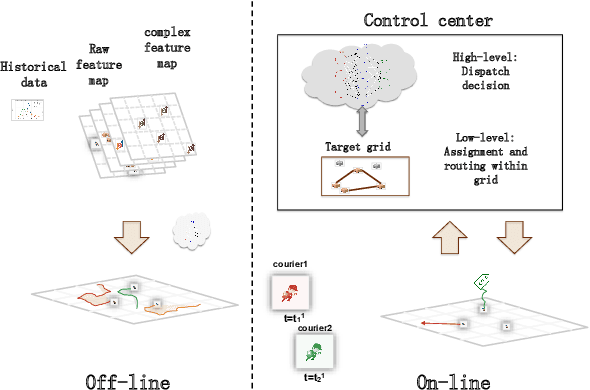
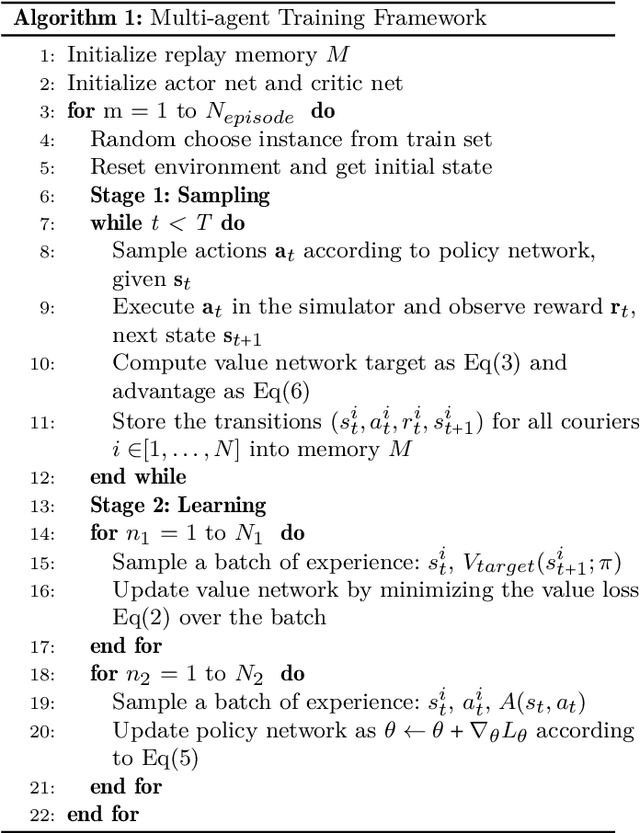

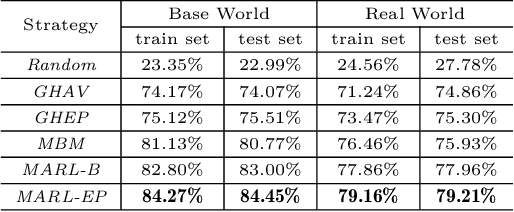
Abstract:In this paper, we study a courier dispatching problem (CDP) raised from an online pickup-service platform of Alibaba. The CDP aims to assign a set of couriers to serve pickup requests with stochastic spatial and temporal arrival rate among urban regions. The objective is to maximize the revenue of served requests given a limited number of couriers over a period of time. Many online algorithms such as dynamic matching and vehicle routing strategy from existing literature could be applied to tackle this problem. However, these methods rely on appropriately predefined optimization objectives at each decision point, which is hard in dynamic situations. This paper formulates the CDP as a Markov decision process (MDP) and proposes a data-driven approach to derive the optimal dispatching rule-set under different scenarios. Our method stacks multi-layer images of the spatial-and-temporal map and apply multi-agent reinforcement learning (MARL) techniques to evolve dispatching models. This method solves the learning inefficiency caused by traditional centralized MDP modeling. Through comprehensive experiments on both artificial dataset and real-world dataset, we show: 1) By utilizing historical data and considering long-term revenue gains, MARL achieves better performance than myopic online algorithms; 2) MARL is able to construct the mapping between complex scenarios to sophisticated decisions such as the dispatching rule. 3) MARL has the scalability to adopt in large-scale real-world scenarios.
 Add to Chrome
Add to Chrome Add to Firefox
Add to Firefox Add to Edge
Add to Edge